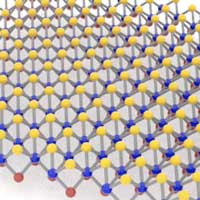 A sandwich of molybdenum, sulfur and selenium turns out to be deliciously useful for detecting biomolecules.
A sandwich of molybdenum, sulfur and selenium turns out to be deliciously useful for detecting biomolecules.
Thursday, May 14, 2020
2D sandwich sees molecules with clarity
 A sandwich of molybdenum, sulfur and selenium turns out to be deliciously useful for detecting biomolecules.
A sandwich of molybdenum, sulfur and selenium turns out to be deliciously useful for detecting biomolecules.
Making quantum 'waves' in ultrathin materials
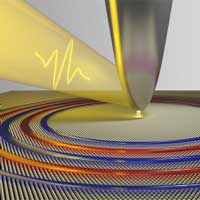 Study reveals how wavelike plasmons could power up new technologies.
Study reveals how wavelike plasmons could power up new technologies.
'Microscope on a chip' could bring medical expertise to distant patients
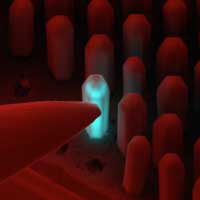 Scientists are reducing the size and costs of medical microscopes to make it possible to use them more widely, and hook them up to experts able to diagnose an illness even from far away.
Scientists are reducing the size and costs of medical microscopes to make it possible to use them more widely, and hook them up to experts able to diagnose an illness even from far away.
Atomically thin magnets for next generation spin and quantum electronics
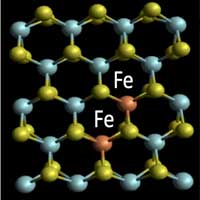 Researchers develop a ferromagnetic semiconductor that works at room temperature, solving one of science's most intractable problems.
Researchers develop a ferromagnetic semiconductor that works at room temperature, solving one of science's most intractable problems.
A new, highly sensitive chemical sensor uses protein nanowires
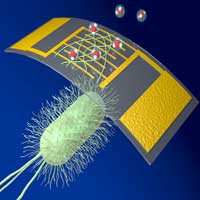 Scientists have developed bioelectronic ammonia gas sensors that are among the most sensitive ever made. It uses electric-charge-conducting protein nanowires derived from the bacterium Geobacter to provide biomaterials for electrical devices.
Scientists have developed bioelectronic ammonia gas sensors that are among the most sensitive ever made. It uses electric-charge-conducting protein nanowires derived from the bacterium Geobacter to provide biomaterials for electrical devices.
Designing flexible and stretchable single crystal electronic systems
 Researchers have discovered that certain crystals are more flexible and stretchable compared to current materials used for electronic applications. These new materials could therefore be used for making sensors and in robotics.
Researchers have discovered that certain crystals are more flexible and stretchable compared to current materials used for electronic applications. These new materials could therefore be used for making sensors and in robotics.
Subscribe to:
Comments (Atom)
